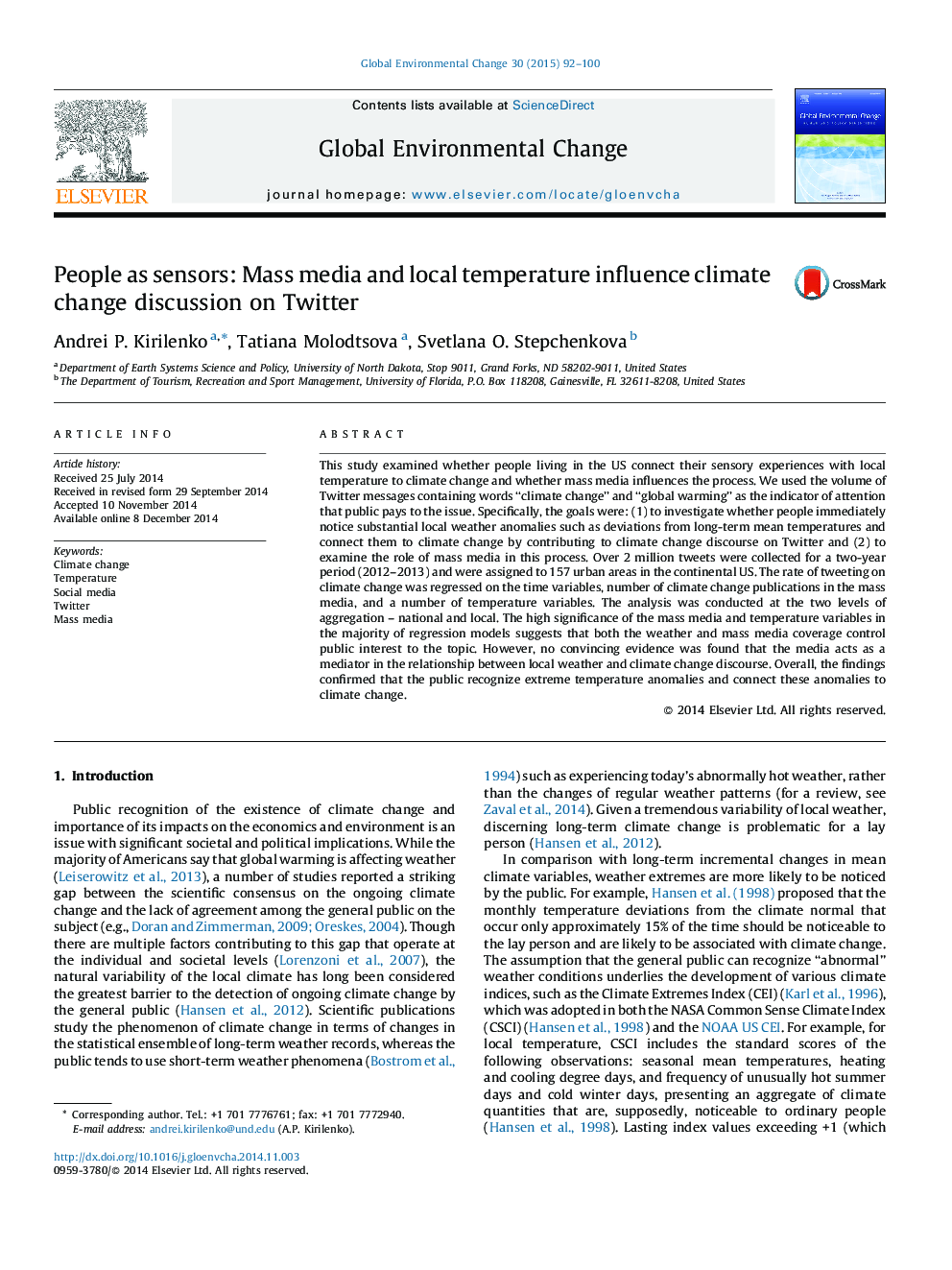| کد مقاله | کد نشریه | سال انتشار | مقاله انگلیسی | نسخه تمام متن |
|---|---|---|---|---|
| 1054672 | 1485128 | 2015 | 9 صفحه PDF | دانلود رایگان |
• Over 2 million USA tweets on climate change collected for a period of 2012–2013.
• Daily number of tweets used as the indicator of attention that US public pays to the issue.
• Mass media influences tweeting on climate change.
• Substantial local temperature anomalies increase tweeting on climate change.
• The mediating effect of media on tweeting on climate change not found.
This study examined whether people living in the US connect their sensory experiences with local temperature to climate change and whether mass media influences the process. We used the volume of Twitter messages containing words “climate change” and “global warming” as the indicator of attention that public pays to the issue. Specifically, the goals were: (1) to investigate whether people immediately notice substantial local weather anomalies such as deviations from long-term mean temperatures and connect them to climate change by contributing to climate change discourse on Twitter and (2) to examine the role of mass media in this process. Over 2 million tweets were collected for a two-year period (2012–2013) and were assigned to 157 urban areas in the continental US. The rate of tweeting on climate change was regressed on the time variables, number of climate change publications in the mass media, and a number of temperature variables. The analysis was conducted at the two levels of aggregation – national and local. The high significance of the mass media and temperature variables in the majority of regression models suggests that both the weather and mass media coverage control public interest to the topic. However, no convincing evidence was found that the media acts as a mediator in the relationship between local weather and climate change discourse. Overall, the findings confirmed that the public recognize extreme temperature anomalies and connect these anomalies to climate change.
Geographical distribution of tweeting on climate change in the US. The colors represent interpolation of the number of tweets (per 10,000 km2) collected over the 2012–2013 time period, with estimated geographical locations. Warmer colors correspond to areas with higher tweeting rate.Figure optionsDownload as PowerPoint slide
Journal: Global Environmental Change - Volume 30, January 2015, Pages 92–100
